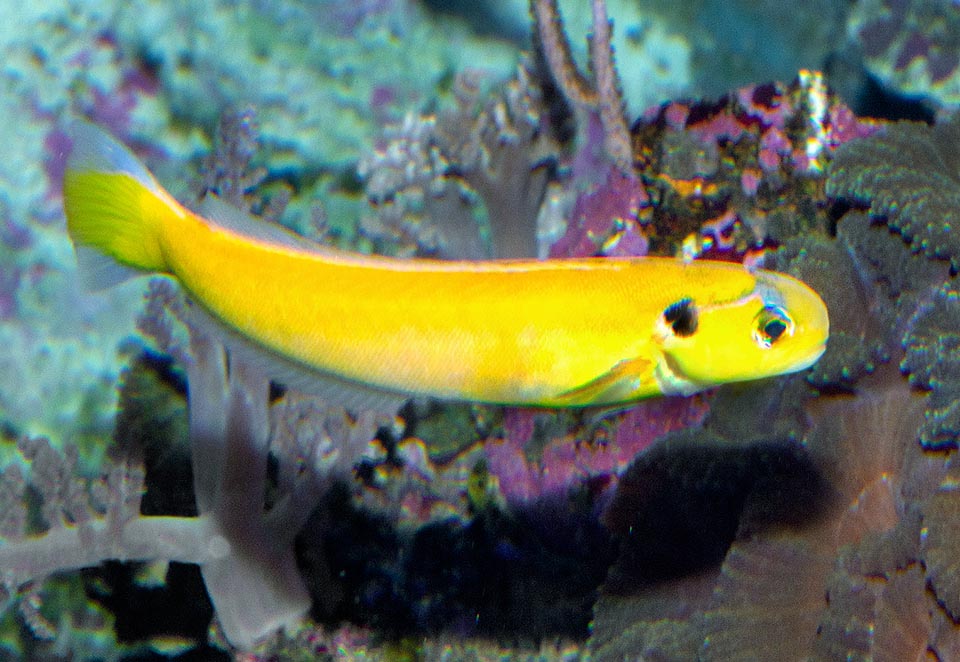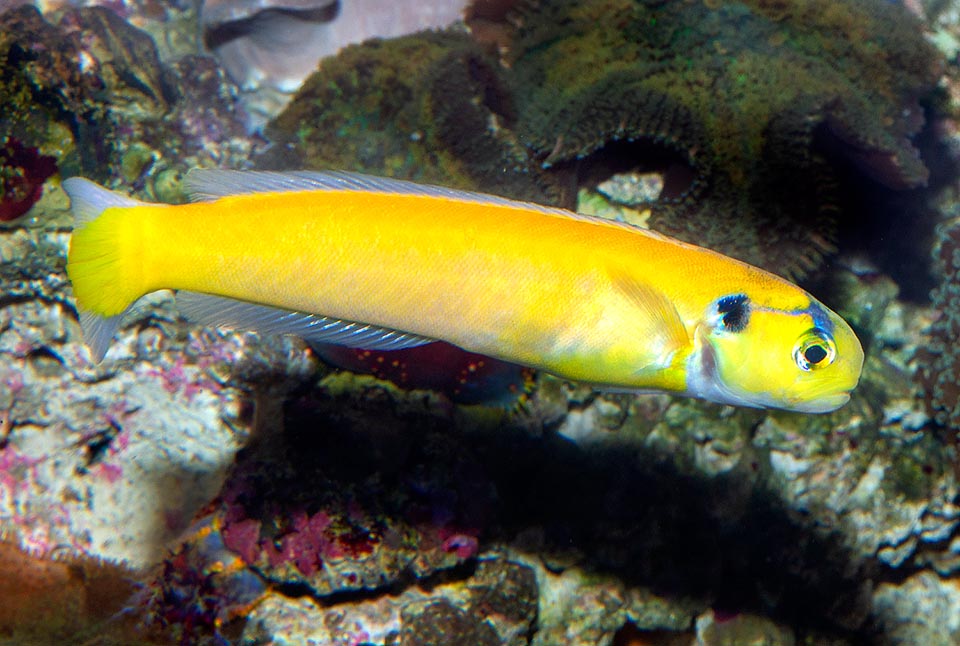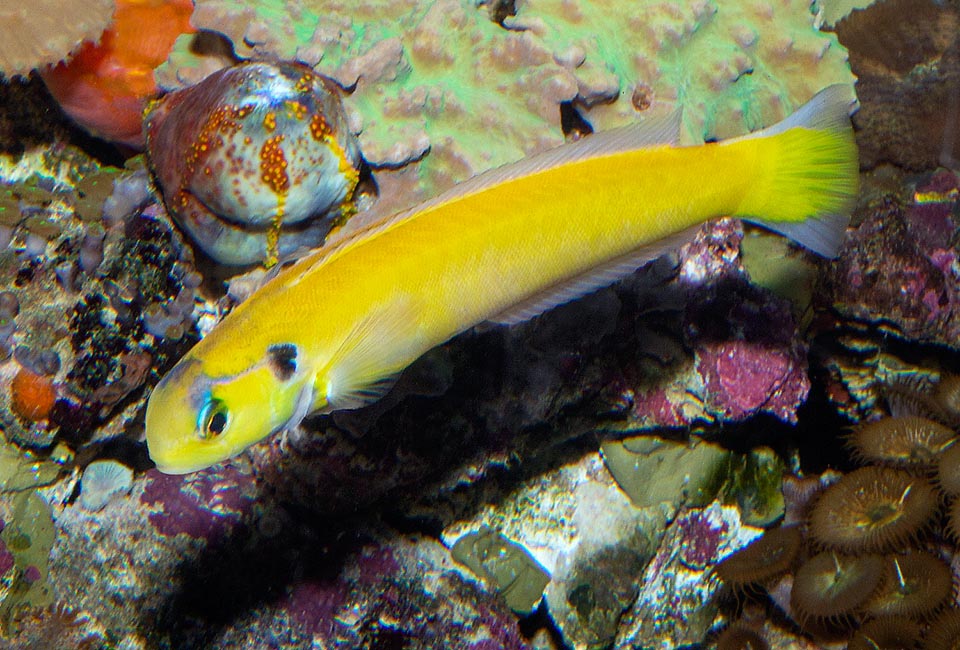Family : Malacanthidae

Text © Giuseppe Mazza

English translation by Mario Beltramini
Hoplolatilus fourmanoiri Smith 1964, belongs to the class of the Actinopterygii, the ray-finned fishes, to the order of the Perciformes and to the small family of the Malacanthidae, counting presently, in 2020, only 5 genera and 45 species, in possible increase pending the researches presently underway.
The genus Hoplolatilus comes from the old Greek “ὅπλον” (òplon), shield, the classical one, circular, used by the infantry, and from the Latin “latus” = wide, with the reference to the fact that these fishes gather in circles, around the entry to the den, remains of shells and of madreporic fragments. Constructions at times modest, but that in three deep water species can reach the diametre of 3 m.
The specific name fourmanoiri commemorates the French ichthyologist Pierre Fourmanoir (1924-2007), who sent the holotope to Smith for description.

Present in Andaman Islands, Indonesia and Solomon Islands, Hoplolatilus fourmanoiri is a species less than 13 cm long, described recently © Giuseppe Mazza
Zoogeography
Hoplolatilus fourmanoiri covers a rather small area in the tropical Indo-Pacific. We find it in the Andaman Islands, Indonesia and Solomon Islands that mark the eastern limit of the species.
Ecolog-Habitat
It is a fish that might be defined as of shallow water for the genus Hoplolatilus, as it moves between 15 and 50 m of depth, rarely exceeding the 35 m, whilst, for instance, Hoplolatilus purpureus and Hoplolatilus marcosi reach the 80 m. Others go down even more, not to talk of the Lopholatilus chamaeleonticeps, the largest species of the family of the Malacanthidae, that, along the American coasts reaches the depth of 540 m.

It eats zooplankton at 15-50 m of depth, sheltering by night or at first sign of danger, in dens dug in morbid and slimy bottoms © Giuseppe Mazza
At times alone, Hoplolatilus fourmanoiri lives mainly in couples spending the night in dens dug in morbid and slimy bottoms along the coastal coral reefs. During the day, it goes swimming, not far from the bottom, in the column of water overlying its residence, where do pass the currents rich with plankton.
Morphophysiology
Fusiform, compressed on the sides, Hoplolatilus fourmanoiri does not exceed 13 cm. The profile of the snout descends almost vertically with a slightly oblique low mouth on the jaw. The dorsal fin has 10 spiny rays and 22 soft of uniform height, almost specular to those of the anal fin counting only 20 of them, preceded by 2 spiny rays. The pectoral fins, pointed with 16 rays, are unarmed as well as the pelvic.
All fins tend to white, but the caudal, truncated, has the central part bright yellow, like the rest of the body. We note a bluish spot over the eye and a showy and characteristic black spot between the upper part of the operculum and the back. Also bordered in blue, it almost draws a second eye to confuse the ideas of the predators.

Characteristic the showy black dot astride the operculum. Blue edged, it almost draws a second eye to confuse predators’ ideas © Giuseppe Mazza
Ethology-Reproductive Biology
Hoplolatilus fourmanoiri nourishes of zooplankton, pelagic copepods and of eggs carried by the currents. Practically, like other species of Hoplolatilus, it keeps quiet over the door of the house, waiting for the food to enter its mouth. About the reproductive modalities we know only that group weddings do not exist and that these take place in the intimacy of the couple.
Perhaps it does not have a spectacular livery like Hoplolatilus purpureus and Hoplolatilus marcosi, but is easier to to be fished and therefore is equally present in the sad disposable fishes market for the domestic aquaria. Even though precise data is lacking, it is not an endangered species. Resilience is good with a population doubling time of less than 15 months, and the vulnerability index to fishing, decidedly low, marks just 10 on a scale of 100.
Since 2017, Hoplolatilus fourmanoiri has therefore appeared as “LC, Least Concern” in the IUCN Red List of endangered species.
Synonyms
Hoplolatilus luteus Allen & Kuiter, 1989.
→ For general information about FISH please click here.
→ For general information about BONY FISH please click here
→ For general information about CARTILAGINOUS FISH please click here.
→ To appreciate the BIODIVERSITY of BONY FISH please click here.
→ To appreciate the BIODIVERSITY of CARTILAGINOUS FISH please click here.
